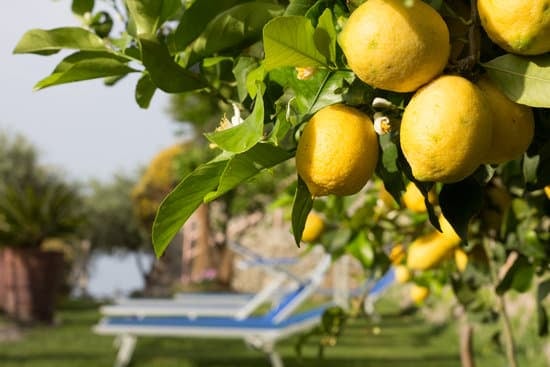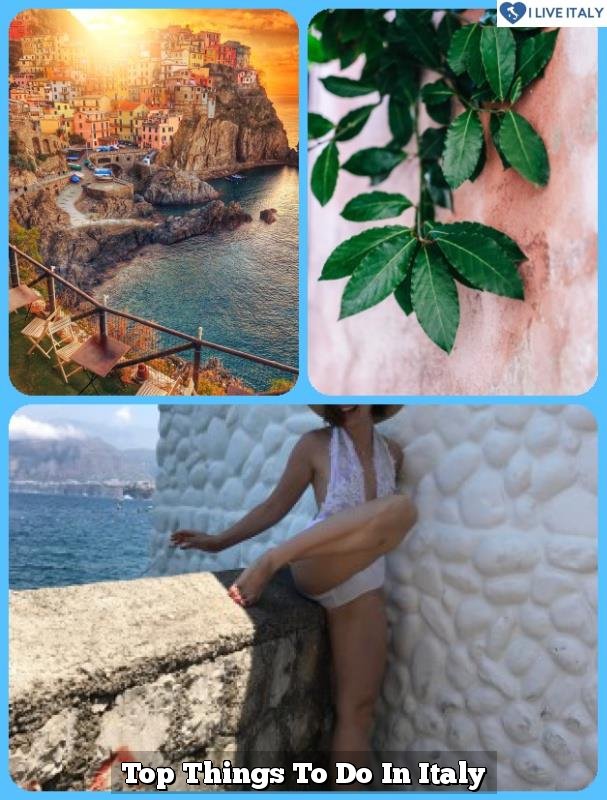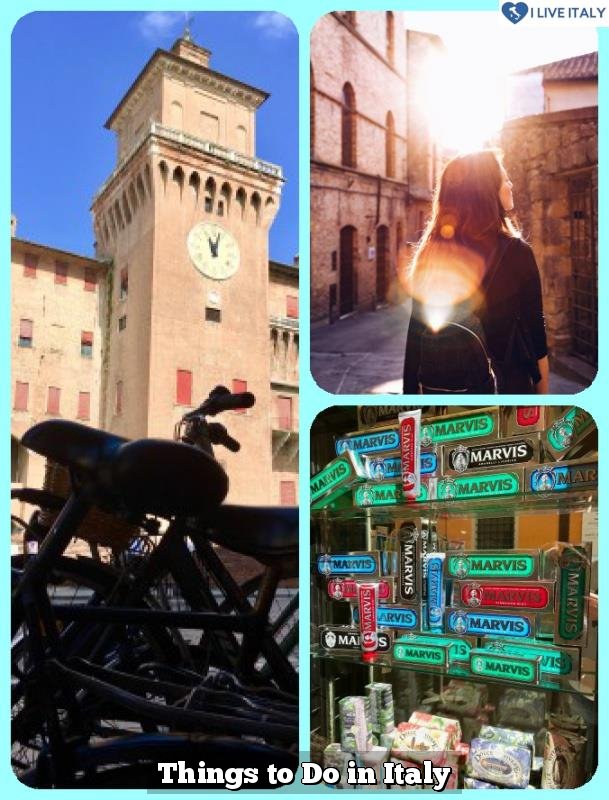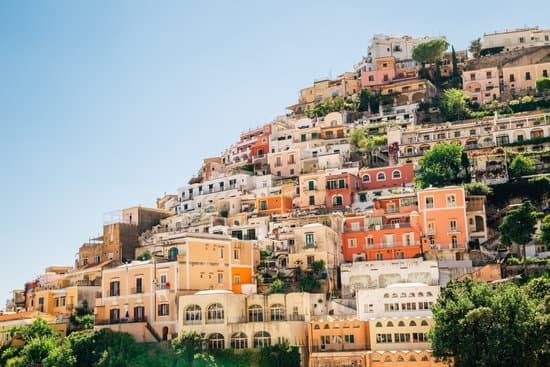Venice, Italy – a city unlike any other in the world. Known as the “City of Canals” and a UNESCO World Heritage Site, Venice captivates travelers with its enchanting beauty and unique atmosphere.
As you navigate through its intricate web of canals, adorned with stunning architecture and historical landmarks, you’ll find yourself immersed in a timeless charm that is hard to replicate. If you’re planning a trip to this captivating city, there are a few things you should know to make the most of your visit.
In this blog post, we will provide essential information for travelers who are planning to visit Venice. From tips on the best time to visit and how to navigate the city’s transportation system, to must-see landmarks and hidden gems off the beaten path, this guide will help you create an unforgettable itinerary. We’ll also delve into Venetian cuisine, cultural etiquette, and how to avoid common tourist scams.
Whether it’s your first time visiting Venice or you’re returning for another rendezvous with its magic, this article will equip you with all the knowledge you need to fully immerse yourself in everything that this enchanting city has to offer. So fasten your seatbelts (or gondola straps) as we embark on a journey through the whimsical canals of Venice.
Best Time to Visit Venice
When planning a trip to Venice, one of the most important considerations is the timing of your visit. The weather and tourist seasons in Venice can greatly impact your experience, so it’s essential to choose the best time to visit based on your preferences. In this section, we will provide insights into the different seasons in Venice and discuss their implications for weather and tourist crowds.
Seasonal Overview: Weather and Crowd Considerations
Venice experiences a humid subtropical climate with mild winters and hot summers. However, the city’s unique location on the Adriatic Sea also means that it can be prone to high tides known as acqua alta. To avoid potential inconveniences caused by flooding, it’s best to avoid visiting during periods of higher tidal levels, which typically occur from November to April.
The peak tourist season in Venice falls between May and September when the weather is warm and pleasant. During this time, you can expect crowds at major attractions such as St. Mark’s Square and longer wait times for popular activities like gondola rides. If you plan to visit during these months, it is advisable to book accommodations and attractions well in advance.
On the other hand, visiting during the shoulder seasons of spring (April-May) or autumn (September-October) offers a more peaceful experience. The temperatures are milder, making it ideal for exploring Venice’s outdoor attractions without feeling overwhelmed by crowds. Additionally, hotel prices tend to be lower compared to the peak summer months.
Selecting Your Preferred Time
Choosing the best time to visit Venice ultimately depends on your personal preferences and priorities. If you prioritize pleasant weather and vibrant festivals such as Carnevale or the Biennale Art Exhibition, then summer may be the right time for you despite larger crowds.
However, if you prefer a quieter atmosphere where you can leisurely explore popular landmarks without jostling through masses of tourists, the shoulder seasons of spring or autumn are ideal. Not only will you be able to appreciate the beauty of Venice at a more relaxed pace, but you may also find better deals on flights and accommodations.
Navigating Venice
When visiting Venice, one of the first things that travelers will notice is the absence of cars. This unique aspect contributes to the city’s charm and allows for a more relaxed and picturesque experience. However, it also means that visitors must rely on alternative methods of transportation to get around the city.
The most common and convenient way to navigate Venice is by using vaporettos, which are water buses that operate like public transportation. These vaporettos provide an efficient means of traveling along the canals and stopping at various points of interest throughout the city. The routes are well-marked, making it easy for visitors to identify which line they need to take.
For those who prefer a more private mode of transportation, water taxis are available. These taxis can be a faster option than vaporettos since they can take you directly to your destination without any stops along the way. However, they tend to be more expensive compared to other forms of transport in Venice.
To save time and money on transportation in Venice, it is recommended to purchase a transportation pass. The ACTV tourist travel card allows unlimited travel on vaporettos within a specified timeframe, ranging from 24 hours to 7 days. This pass not only provides convenience but also offers excellent value for money.
Here are some travel tips for navigating Venice:
- Plan your routes in advance: Familiarize yourself with the different vaporetto lines and their stops before your trip so you can efficiently navigate through the city.
- Be mindful of rush hour: Vaporettos can get crowded during peak hours, especially in popular areas such as St. Mark’s Square. Consider adjusting your schedule accordingly.
- Validate your ticket: Make sure to validate your ticket before boarding any form of public transportation in Venice. Failure to do so may result in a fine if caught by ticket inspectors.
- Wear comfortable shoes: Venice is a city best explored on foot, so wearing comfortable shoes is essential. The narrow streets and countless bridges may require a lot of walking.
By familiarizing yourself with the transportation options available in Venice and following these travel tips, you will be well-prepared to navigate the city efficiently and enjoy everything it has to offer. Whether you choose vaporettos or water taxis, each journey along the enchanting canals will add a touch of magic to your Venetian adventure.
Must-See Venetian Landmarks and Attractions
Venice, Italy is a city renowned for its breathtaking landmarks and world-famous attractions. In this section, we will explore some of the must-see Venetian landmarks that should be on every visitor’s itinerary.
One of the most iconic landmarks in Venice is St. Mark’s Square, known as Piazza San Marco in Italian. This bustling square is dominated by the magnificent St. Mark’s Basilica, a stunning example of Byzantine architecture. Visitors can marvel at the intricate mosaics adorning the church’s façade and explore its opulent interior. Another highlight of St. Mark’s Square is the Campanile di San Marco, an imposing bell tower that offers panoramic views of the city.
Doge’s Palace, or Palazzo Ducale, is another must-visit attraction in Venice. Located next to St. Mark’s Basilica, this Gothic masterpiece served as the seat of power for the Venetian Republic for centuries. Inside, visitors can admire the opulent rooms adorned with magnificent artworks by masters such as Tintoretto and Veronese. The Bridge of Sighs, connecting the palace to the prison across the canal, is also worth seeing for its fascinating history and romantic allure.
No visit to Venice would be complete without crossing one of its most famous bridges – Rialto Bridge. Spanning the Grand Canal, this architectural gem dates back to 1591 and has been a bustling hub for centuries. Besides its ornate structure and picturesque views of gondolas passing below, Rialto Bridge also hosts a lively market where visitors can browse local produce and souvenirs.
When planning your itinerary, make sure to consider entry fees and recommended visiting hours for each landmark to optimize your visit and avoid long queues. It is also advisable to book tickets in advance whenever possible to secure your spot.
By exploring these historic landmarks and attractions in Venice, you will be able to appreciate the city’s rich history and architectural splendor.
Hidden Gems
Venice is a city with countless hidden gems waiting to be discovered. While iconic attractions like St. Mark’s Square and the Rialto Bridge should not be missed, exploring off-the-beaten-path neighborhoods and lesser-known attractions will truly allow you to uncover the authentic charm of Venice. In this section, we will reveal some of these hidden gems that will make your visit to Venice even more memorable.
One such gem is Libreria Acqua Alta, a quirky bookstore that perfectly embodies the uniqueness of Venice. Located in the Castello neighborhood, this bookstore is known for its unconventional display of books stacked inside bathtubs and gondolas. Visitors can wander through piles of books in various languages and take a seat on a staircase made entirely of books while enjoying scenic views of the adjacent canal.
Another hidden gem worth visiting is Fondamenta delle Zattere, a picturesque promenade overlooking the Giudecca Canal. Away from the bustling tourist areas, this tranquil spot offers visitors a peaceful escape with panoramic views and charming waterfront cafes. Take a leisurely stroll along the promenade at sunset or enjoy a gelato while watching gondolas glide by.
If you’re looking for local art and creativity, head to Dorsoduro neighborhood where you’ll find Punta della Dogana. This contemporary art museum hosts rotating exhibitions featuring works by renowned artists from around the world. Housed in an iconic building with stunning views of the Grand Canal, Punta della Dogana provides a refreshing contrast to Venice’s historic landmarks.
| Hidden Gem | Description |
|---|---|
| Scala Contarini del Bovolo | A spiral staircase hidden within an ancient Venetian palace offering breathtaking views |
| Church of San Giorgio Maggiore | A serene church on an island opposite St. Mark’s Square, offering panoramic views from its bell tower |
| Squero di San Trovaso | A traditional gondola yard where you can witness craftsmen building and repairing gondolas |
Exploring these hidden gems will allow you to see a side of Venice that often goes unnoticed by most tourists. Whether it’s visiting a quirky bookstore or wandering through tranquil neighborhoods, these off-the-beaten-path discoveries will provide unique experiences and lasting memories during your trip to Venice.
Food and Drink
Venice is not only known for its picturesque canals and stunning architecture but also for its delectable cuisine. As a traveler visiting Venice, indulging in the local food and drink is an essential part of immersing yourself in the culture and experiencing the true flavors of the city. From traditional dishes to authentic local restaurants, this section will guide you through the culinary delights that await you in Venice.
Discovering Venetian Cuisine
When it comes to Venetian cuisine, there is so much more than just pizza and pasta. The city has a rich culinary heritage influenced by its unique location and historical trade routes. Traditional dishes often incorporate seafood from the lagoon, fresh vegetables, herbs, spices, and regional ingredients.
One must-try dish is Sarde in Saor, which showcases the Venetian love for sweet and sour flavors. This dish consists of marinated sardines with onions, raisins, pine nuts, and vinegar. Another favorite among locals is Bigoli in Salsa, a pasta dish made with thick spaghetti served in a sauce made from anchovies.
For those with a sweet tooth, don’t miss out on trying Fritelle Veneziane during Carnevale season. These delightful fried doughnuts are filled with cream or custard and sprinkled with powdered sugar – a true treat.
Exploring Local Eateries
To experience the most authentic Venetian cuisine, venture off the beaten path and explore some local eateries away from the tourist hotspots. Trattorias are small family-run restaurants that serve traditional regional dishes. Look out for these hidden gems where you can mingle with locals while savoring delicious meals.
One such place to dine like a local is Al Covo Ristorante located near Campo della Tetta. It’s known for its emphasis on using high-quality local ingredients to create unique Venetian flavors. Another popular local spot is Osteria alla Frasca, a cozy restaurant that offers a seasonal menu with dishes made from fresh ingredients sourced from the nearby Rialto Market.
When dining out in Venice, it’s common to find a coperto or cover charge added to your bill. This fee usually includes bread and service charges. Keep this in mind when budgeting for your meals, so you’re not caught off guard.
Venice is truly a haven for food lovers, and embracing the local cuisine will undoubtedly enhance your travel experience. Whether you’re indulging in traditional dishes, exploring hidden gems, or dining at local eateries, be prepared to savor the unique flavors and culinary delights that Venice has to offer.
Cultural Etiquette
When traveling to Venice, it is important to be aware of and respect the cultural customs and norms specific to the city. Venetians take pride in their rich history and traditions, and by understanding and adhering to these customs, visitors can have a more enjoyable and respectful experience. In this section, we will discuss various aspects of Venetian culture and provide tips on how to navigate them with grace.
One important aspect of Venetian culture is etiquette within churches. Venice is home to numerous beautiful churches that are not only symbols of religious significance but also architectural marvels. When visiting these sacred spaces, it is essential to dress modestly and respectfully. Both men and women should cover their shoulders and refrain from wearing shorts or revealing clothing. Additionally, ensure that your movements are quiet and respectful inside the church as a sign of reverence.
Another quintessential Venetian experience is taking a gondola ride through the enchanting canals. While gondolas are a popular tourist attraction, it is important to respect the gondoliers and their profession. Avoid negotiations or haggling over prices as this can be seen as disrespectful. Instead, agree upon the fare before entering the gondola or simply follow the standard rates set by local authorities.
In encounters with locals, it is customary to greet people with a warm “Buongiorno” (good morning) or “Buonasera” (good evening) when entering shops or establishments. It is also polite to say “Grazie” (thank you) whenever receiving assistance or purchasing something. Engaging in small talk or asking for recommendations shows interest in the local culture and can lead to pleasant interactions.
| Venetian Custom | Tips |
|---|---|
| Etiquette in Churches | – Dress modestly and cover your shoulders\n – Maintain a quiet and respectful demeanor |
| Gondola Rides | – Agree upon the fare before entering the gondola\n – Avoid negotiating with gondoliers |
| Interacting with Locals | – Greet people with “Buongiorno” or “Buonasera”\n – Say “Grazie” when receiving assistance or making purchases\n – Engage in small talk to show interest |
By adhering to these customs, travelers can foster positive connections with Venetians and gain a deeper appreciation for their culture. Respect for the local customs is not only seen as polite but also as a way to participate fully in the Venetian experience. Remember, embracing the customs of Venice will enhance your visit and make it even more memorable.
Avoiding Tourist Traps
Venice is undeniably one of the most popular tourist destinations in the world, attracting millions of visitors each year. However, with its popularity comes the inevitable presence of scams and tourist traps that travelers should be aware of to ensure a safe and enjoyable trip. In this section, we will discuss some common scams that tourists may encounter in Venice and provide tips on how to recognize and avoid them.
One of the most prevalent scams in Venice involves inflated prices. Some restaurants, shops, or even water taxi drivers may take advantage of tourists by charging exorbitant prices for goods or services. To avoid falling victim to this scam, it is essential to do research beforehand and get a sense of typical prices for things like meals or transportation. Be wary of establishments that do not display their prices clearly or seem unnecessarily expensive compared to others in the area.
Another common scam in Venice involves fake tours. Some individuals posing as official tour guides may approach tourists offering guided tours at attractive prices. These so-called guides often take unsuspecting travelers on subpar or unregulated tours that lack quality and authenticity. To avoid being scammed, always opt for licensed tour operators who are endorsed by reputable organizations or look for tour guide badges displayed prominently.
Lastly, be cautious of pushy vendors who try to sell you products or services aggressively. While it is natural for street vendors and shop owners to promote their goods, some may cross the line into harassment or intimidation tactics. Remember that you have the right to say no if you are not interested in purchasing anything. If you encounter an overly persistent vendor, it is best to walk away and find a more pleasant shopping experience elsewhere.
By being aware of these common scams and staying vigilant during your visit to Venice, you can steer clear of any potential tourist traps and enjoy a stress-free trip. Remember to trust your instincts, be skeptical if something seems too good to be true, and seek advice from locals or other travelers if you are unsure about a particular situation.
With a little caution and preparation, you can fully immerse yourself in the magic of Venice without falling victim to scams.
Conclusion
In conclusion, Venice truly is a city like no other. Its enchanting canals and stunning architecture create a magical atmosphere that captivates every traveler who sets foot in this unique city. Throughout this guide, we have provided essential information to help you make the most of your trip to Venice. From the best time to visit and navigating the city’s transportation options to exploring iconic landmarks and discovering hidden gems, we have covered a wide range of topics.
One cannot visit Venice without indulging in its rich culinary offerings. Venetian cuisine offers a delightful array of flavors and dishes that go beyond traditional pizza and pasta. We have introduced you to some must-try local dishes and recommended authentic restaurants where you can savor these delicacies.
It is also important to respect Venetian customs and embrace the local lifestyle during your visit. Understanding cultural etiquette, such as appropriate dress codes in churches or being respectful during gondola rides, will ensure that you have a memorable and meaningful experience in Venice.
As you embark on your journey to Venice, remember to be cautious of common scams or tourist traps that may attempt to spoil your trip. Stay vigilant and use our tips on recognizing and avoiding these situations to guarantee a stress-free vacation.
In closing, we invite you to fully embrace the magic of Venice. Immerse yourself in its unrivaled beauty, historical wonders, and vibrant culture. Whether it’s sharing your travel stories with us or reaching out with any questions you may have, we are excited for you to embark on this unforgettable adventure in one of the world’s most enchanting cities. Buon viaggio.
Frequently Asked Questions
What you need to know before visiting Venice?
Before visiting Venice, there are a few things you should know to make your trip more enjoyable. First and foremost, be prepared for large crowds as Venice is a popular tourist destination. The city can get very crowded, especially during peak tourist seasons, so it’s important to be patient and plan accordingly.
Additionally, it’s worth noting that Venice is built on water and consists of many small islands connected by bridges and canals. This means that navigating the city can be quite different from other destinations, so it’s best to familiarize yourself with the layout before your visit. Finally, Venice has a unique atmosphere and charm that can only be truly experienced by walking through its narrow streets and alleyways, so be prepared for long walks and wear comfortable shoes.
How do I prepare for a trip to Venice?
To prepare for a trip to Venice, there are a few things you can do to ensure a smooth experience. First, make sure you have all necessary travel documents such as your passport and any required visas well in advance of your trip. Additionally, it’s always a good idea to check the weather forecast for your time in Venice so you can pack appropriate clothing and accessories.
Given that the city is built on water, unpredictable rain showers are not uncommon, so carrying an umbrella or raincoat is advisable. Furthermore, consider purchasing tickets or making reservations for major attractions or events ahead of time to avoid long queues or disappointment upon arrival.
What are the new rules for Venice visitors?
In recent years, new rules have been implemented for visitors to Venice in order to manage the impact of overtourism and preserve the city’s delicate ecosystem. One significant change is the introduction of an entrance fee called “Venice City Pass” which applies to day-trippers arriving from cruise ships or other organized tours but not those staying overnight in accommodations within the city limits. This measure aims at reducing overcrowding during peak times while generating revenue for infrastructure maintenance and environmental preservation efforts.
Moreover, there are certain areas designated as “no sitting zones” to prevent tourists from blocking narrow alleys or obstructing locals’ passage. Visitors are encouraged to respect these regulations and be considerate of the local residents and their daily lives. Lastly, there have been efforts to promote sustainable tourism in Venice, so being mindful of the environment by reducing waste and using public transportation or walking whenever possible is highly encouraged.

I’m a passionate traveler, writer, and Italophile. My fascination with Italy’s history, art, and culture has led me on countless adventures across the Italian landscape. Through “I Live Italy,” I share my love for this extraordinary country and aims to inspire others to explore its boundless beauty.





